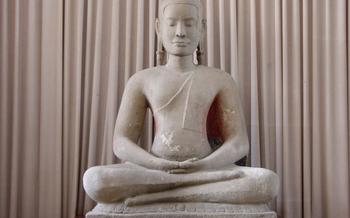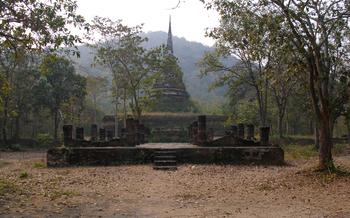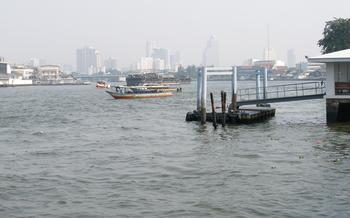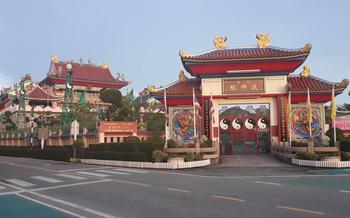
Wat Kotharam
- The Wat Kotharam Temple: A Stunning Historical Gem
- Location and Accessibility
- Exploring the Temple Grounds
- The Main Shrine Hall: A Place of Worship and Wonder
- The Ordination Hall: A Center for Spiritual Enlightenment
- Architectural Features and Design Elements
- Use of the Hall for Ceremonies, Rituals, and Teachings
- Symbolism and Spiritual Practices Associated with the Hall
- A Place of Renewal and Transformation
- The Bell Tower: A Call to Mindfulness and Devotion
- The Vihara: A Place of Meditation and Tranquility
- The Chedi: A Symbol of Spiritual Aspiration
- The Ubosot: A Sacred Space for Ordinations and Ceremonies
- The Temple School: A Center for Learning and Education
- The Temple Fair: A Celebration of Community and Faith
- Nearby Attractions and Activities
- Insider Tip: Hidden Gems and Local Secrets
The Wat Kotharam Temple: A Stunning Historical Gem
The Wat Kotharam Temple, located in the Samut Prakan Province of Thailand, is a magnificent historical and cultural landmark that attracts visitors from around the world. Built in the 17th century, the temple holds significant religious, architectural, and spiritual value, making it a must-visit destination for those seeking a glimpse into Thailand's rich heritage.
The temple's history is intertwined with the reign of King Narai the Great, who commissioned its construction as a royal temple. Dedicated to the revered Buddha image known as the Phra Buddha Lokanat, the Wat Kotharam Temple served as a place of worship and meditation for the royal family and the surrounding community.
Architecturally, the temple showcases a blend of traditional Thai and European influences, reflecting the cosmopolitan nature of the Ayutthaya Kingdom during the 17th century. Its distinctive features include intricate carvings, colorful murals, and towering spires that soar towards the sky.
Beyond its architectural beauty, the Wat Kotharam Temple holds deep religious and spiritual significance for Buddhists. The temple is home to several sacred Buddha images, including the revered Phra Buddha Lokanat, which is believed to possess miraculous powers. Devotees from all over Thailand and beyond flock to the temple to pay homage to the Buddha images and seek blessings.
Location and Accessibility
Situated in the vibrant province of Samut Prakan, Thailand, the Wat Kotharam Temple stands as a testament to the country's rich cultural heritage. Its exact location is at 247 Moo 1, Bang Ya Phraek Road, Bang Ya Phraek Subdistrict, Phra Pradaeng District, Samut Prakan 10130, Thailand. To reach this sacred site, visitors can embark on a scenic journey by car or taxi, following the scenic Bang Ya Phraek Road. Alternatively, those seeking a more immersive experience can opt for a leisurely boat trip along the Chao Phraya River, disembarking at the Bang Ya Phraek Pier and continuing their journey on foot or by bicycle.
Once at the temple, visitors will find ample parking facilities available, ensuring a convenient and hassle-free visit. The temple's proximity to other notable landmarks and attractions adds to its allure, inviting travelers to explore the vibrant tapestry of Samut Prakan's cultural and historical offerings.
Exploring the Temple Grounds
The Wat Kotharam temple complex encompasses a sprawling expanse of verdant grounds, meticulously landscaped and adorned with a plethora of religious structures and decorative elements. Visitors are immediately struck by the harmonious layout and design of the temple, which exudes a sense of tranquility and spiritual serenity.
At the heart of the complex lies the majestic main shrine hall, a testament to the architectural prowess of the temple's builders. Its intricate carvings, gleaming spires, and vibrant murals depict tales from Buddhist mythology and folklore, capturing the essence of Thailand's rich cultural heritage.
Interspersed among the lush greenery are numerous smaller shrines, each dedicated to a different deity or revered figure. These shrines, adorned with colorful tiles, intricate stucco work, and offerings from devotees, create a vibrant tapestry of religious devotion and spiritual practice.
The temple grounds are also home to a collection of statues and sculptures, ranging from serene Buddha images to mythical creatures and celestial beings. These works of art, carved with exquisite detail and craftsmanship, add to the temple's allure and provide a glimpse into the rich artistic traditions of Thailand.
The Main Shrine Hall: A Place of Worship and Wonder
The main shrine hall of Wat Kotharam is an architectural masterpiece that exudes grandeur and spirituality. Its towering structure is adorned with intricate carvings, delicate stucco work, and shimmering gold leaf. The interior is equally impressive, with elaborate paintings depicting scenes from Buddhist mythology covering the walls and ceiling.
The focal point of the hall is the elaborate altar, where several sacred Buddha images are enshrined. These statues, crafted with exquisite craftsmanship, radiate an aura of serenity and devotion. Devotees come here to pay homage, offer prayers, and seek blessings from the Lord Buddha.
Rituals, ceremonies, and offerings are regularly performed in the main shrine hall, creating a vibrant and spiritual atmosphere. The rhythmic chanting of monks, the fragrance of incense, and the flickering of candlelight transport visitors to a realm of tranquility and devotion.
The Ordination Hall: A Center for Spiritual Enlightenment
The ordination hall, also known as the ubosot, holds a special significance within the Wat Kotharam temple complex. Constructed according to strict Buddhist principles, this sacred space is dedicated to the spiritual enlightenment and transformation of individuals.
Architectural Features and Design Elements
The ordination hall is characterized by its distinctive architectural features and design elements. Its rectangular shape and tiered roof symbolize the journey towards spiritual growth and transcendence. The interior is adorned with intricate wall paintings and sculptures, depicting scenes from the life of Buddha and important Buddhist teachings.
Use of the Hall for Ceremonies, Rituals, and Teachings
The ordination hall serves as the primary venue for various ceremonies, rituals, and teachings within the temple. It is here that young men undergo the sacred rite of passage known as ordination, becoming ordained as Buddhist monks. During these ceremonies, the candidates are guided through a series of rituals and teachings, symbolizing their commitment to the monastic life.
Symbolism and Spiritual Practices Associated with the Hall
The ordination hall is imbued with deep symbolism and spiritual practices. It is believed to be a sacred space where individuals can purify their minds and hearts, and embark on a journey of self-discovery and enlightenment. The hall is often used for meditation, chanting, and the study of Buddhist scriptures, fostering a serene and contemplative atmosphere.
A Place of Renewal and Transformation
As a center for spiritual enlightenment, the ordination hall provides a space for individuals to embrace a new path of life, dedicated to the pursuit of wisdom and compassion. Through the rituals, teachings, and practices conducted within its walls, the hall serves as a catalyst for personal transformation and spiritual growth, guiding individuals towards a deeper understanding of themselves and their place in the world.
The Bell Tower: A Call to Mindfulness and Devotion
Wat Kotharam's bell tower stands as a testament to the temple's rich history and spiritual significance. Constructed in the traditional Thai style, the tower features intricate carvings, delicate spires, and a distinctive curved roof that reaches towards the heavens. The bell, housed within the tower's arched opening, is a revered symbol of mindfulness and devotion in the Buddhist tradition.
The sound of the bell, echoing through the temple grounds, serves as a call to prayer and meditation. Monks and visitors alike gather at the base of the tower to listen to the bell's resonant tones, which are believed to purify the mind and promote spiritual awakening. The bell's vibrations are said to create a sacred space, inviting devotees to let go of worldly distractions and connect with their inner selves.
Beyond its religious significance, the bell tower also holds cultural and historical importance. It represents the temple's connection to the surrounding community, as the sound of the bell was traditionally used to signal the time and to announce important events. The bell tower stands as a reminder of the temple's role as a spiritual and social hub, where people from all walks of life came together to seek guidance, solace, and a sense of belonging.
The Vihara: A Place of Meditation and Tranquility
The vihara, also known as the assembly hall or meditation hall, is another significant structure within the Wat Kotharam temple complex. It serves as a sacred space for monks and laypeople to gather for meditation, chanting, and religious teachings.
The Chedi: A Symbol of Spiritual Aspiration
The chedi, or stupa, is an iconic structure found within the temple grounds, symbolizing the path to spiritual enlightenment. Its towering presence and intricate design make it a captivating sight.
Architectural Features and Design Elements:
The chedi typically consists of a circular base, a bell-shaped body, and a pointed spire, each element representing different aspects of the Buddhist faith. The base often features decorative moldings and reliefs, depicting scenes from Buddhist mythology or everyday life. The bell-shaped body is adorned with intricate carvings, symbolizing the accumulation of merit through good deeds. The spire, reaching towards the heavens, represents the ultimate goal of spiritual liberation.
Use of the Chedi as a Reliquary and Place of Worship:
The chedi serves as a reliquary, housing sacred relics or revered objects associated with Buddha or important monks. These relics may include bone fragments, personal belongings, or items of religious significance. Devotees often pay homage to the chedi, offering prayers, flowers, and incense to pay respect to the sacred relics within.
Cultural and Religious Practices Associated with the Chedi:
The chedi holds deep cultural and religious significance. It is considered a symbol of merit-making, and circumambulating the chedi clockwise is believed to bring good fortune and spiritual blessings. Devotees may also leave offerings at the base of the chedi, such as flowers, candles, or food, as a way of expressing their gratitude and devotion.
The Ubosot: A Sacred Space for Ordinations and Ceremonies
The ubosot, also known as the ordination hall, is a central and sacred structure within the Wat Kotharam temple complex. It holds immense religious significance as the designated space for ordinations, ceremonies, and rituals that mark important milestones in the lives of Buddhist monks and the temple community.
Architecturally, the ubosot is a remarkable sight, showcasing intricate designs and elaborate ornamentation. Its towering spires, adorned with delicate carvings and colorful tiles, reach towards the heavens, symbolizing the temple's connection to the divine. The interior of the ubosot is equally captivating, featuring intricate murals depicting scenes from Buddhist mythology and the life of the Buddha. These murals not only enhance the aesthetic beauty of the space but also serve as powerful teaching tools, conveying moral lessons and guiding principles to visitors.
The most sacred element within the ubosot is the elevated platform, where the ordination ceremonies take place. This platform is reserved for monks and is considered a highly revered space. During ordinations, young men from the community gather here to receive their monastic robes and vows, marking their transition into the Buddhist monastic order.
The ubosot also serves as a venue for other important ceremonies and rituals throughout the year. These include merit-making ceremonies, where devotees offer food and other gifts to the monks to earn spiritual merit, and chanting sessions, where monks and laypeople gather to recite sacred Buddhist texts and mantras.
Overall, the ubosot is a sacred and significant structure within the Wat Kotharam temple complex, representing the heart of the temple's religious and ceremonial life. Its architectural grandeur and spiritual atmosphere make it a must-visit for anyone seeking to delve into the rich cultural and religious heritage of Thailand.
The Temple School: A Center for Learning and Education
The Wat Kotharam Temple also houses a temple school, which plays a vital role in the community. Established in the early 20th century, the school initially provided basic education to young monks and boys from the surrounding villages. Over the years, it has evolved into a respected educational institution offering a comprehensive curriculum that includes traditional Buddhist teachings, Thai language, mathematics, science, and social studies.
The school's mission is to provide a holistic education that nurtures both the mind and the spirit. Students learn not only academic subjects but also the values of compassion, kindness, and respect. The school's dedicated teachers strive to create a supportive and nurturing environment where students can thrive and develop their full potential.
The temple school is a valuable asset to the community, providing access to quality education for children from all socioeconomic backgrounds. It also serves as a center for lifelong learning, offering adult education classes and workshops on various topics. The school's commitment to education and community development makes it an integral part of the Wat Kotharam Temple's mission to serve and uplift the local community.
The Temple Fair: A Celebration of Community and Faith
The Wat Kotharam Temple Fair is an annual event that draws a large number of visitors from the local community and beyond. It serves as a celebration of community spirit and religious devotion, offering a unique glimpse into the cultural and spiritual traditions of the region.
The fair is typically held during the month of November and features a wide range of activities and attractions for visitors to enjoy. These include traditional Thai games, such as tug-of-war and bamboo pole climbing, as well as stalls selling a variety of local delicacies, souvenirs, and handicrafts.
Cultural performances, including traditional Thai dance and music, are also a highlight of the fair, providing visitors an opportunity to experience the vibrant and rich artistic heritage of the region. The fair also includes a religious procession, where monks and devotees carry sacred Buddha images and other religious objects through the temple grounds, creating a colorful and devout spectacle.
The Wat Kotharam Temple Fair is not only a celebration of the temple's history and traditions but also a way for the community to come together and strengthen their bonds of friendship and unity. It is a joyous and lively event that provides a unique and unforgettable experience for visitors of all backgrounds.
Nearby Attractions and Activities
Beyond the awe-inspiring Wat Kotharam, Samut Prakan offers a wealth of other attractions that beckon to be explored. Immerse yourself in history at the ancient city of Ayutthaya, a UNESCO World Heritage Site renowned for its magnificent ruins and temples. Marvel at the grandeur of the Grand Palace in Bangkok, the official residence of the Thai monarchy, and explore the intricate details of the Temple of the Emerald Buddha within its sacred grounds.
For art enthusiasts, the Museum of Contemporary Art (MOCA) showcases a diverse collection of modern and contemporary Thai art, while the Bang Namphueng Floating Market offers a unique blend of traditional Thai culture and vibrant local life. Indulge in delectable seafood dishes and soak up the lively atmosphere as you navigate the canals in a traditional wooden boat.
Thrill-seekers can embark on a thrilling adventure at Dream World, Thailand's largest theme park, where exhilarating rides, water slides, and live shows await. Nature lovers will find solace in the lush greenery of Bang Pu Recreation Center, a popular spot for picnicking, biking, and enjoying panoramic views of the Gulf of Thailand.
Insider Tip: Hidden Gems and Local Secrets
Uncover the hidden gems and local secrets that make the Wat Kotharam Temple a truly enchanting destination. Explore the serene gardens, where tranquil ponds and lush greenery create a peaceful oasis amidst the temple's grandeur. Discover the intricate carvings and sculptures adorning the temple walls, each telling a unique story from Buddhist mythology.
For a truly unique experience, visit during the early morning hours when the temple is bathed in a soft golden light, casting an ethereal glow on the buildings and grounds. This is an ideal time for meditation and reflection, allowing you to connect with the temple's spiritual energy.
To capture the temple's beauty in all its glory, plan your visit during the dry season (November to April) when the skies are clear, and the sunlight illuminates the intricate details of the temple architecture.
Remember to dress respectfully and maintain a peaceful demeanor throughout your visit to honor the sacred nature of the temple. With a little exploration and an open heart, you'll discover the hidden treasures that make the Wat Kotharam Temple a truly unforgettable experience.




